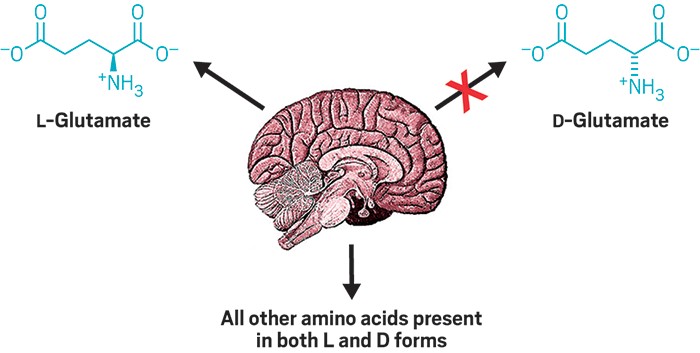Advertisement
Grab your lab coat. Let's get started
Welcome!
Welcome!
Create an account below to get 6 C&EN articles per month, receive newsletters and more - all free.
It seems this is your first time logging in online. Please enter the following information to continue.
As an ACS member you automatically get access to this site. All we need is few more details to create your reading experience.
Not you? Sign in with a different account.
Not you? Sign in with a different account.
ERROR 1
ERROR 1
ERROR 2
ERROR 2
ERROR 2
ERROR 2
ERROR 2
Password and Confirm password must match.
If you have an ACS member number, please enter it here so we can link this account to your membership. (optional)
ERROR 2
ACS values your privacy. By submitting your information, you are gaining access to C&EN and subscribing to our weekly newsletter. We use the information you provide to make your reading experience better, and we will never sell your data to third party members.
Spectroscopy
Serine octamer reveals its structure
The structure of the protonated eight-membered cluster of serines formed during electrospray ionization has long baffled mass spectrometrists
by Melissae Fellet, special to C&EN
May 3, 2018
| A version of this story appeared in
Volume 96, Issue 19
After more than a decade of effort, researchers have identified the likely structure of the protonated serine octamer, an unusual complex first observed by mass spectrometry almost 20 years ago (J. Am. Chem. Soc. 2018, DOI: 10.1021/jacs.8b02118). Researchers used a combination of computer modeling and advanced infrared spectrometry to confirm this molecular arrangement. The newly reported structure is the first that explains all of the experimental observations related to the complex and its distinctive chemistry, the researchers say.
In 2001, researchers noticed that serine—unlike other amino acids—formed a charged, eight-membered cluster during electrospray ionization mass spectrometry (Anal. Chem. 2001 DOI: 10.1021/ac010284l). This octamer, and its closely related cousins, captured their attention for several reasons. First, the eight-membered cluster was by far the most abundant form out of all serine cluster sizes, suggesting that its structure was particularly stable. Even when produced from a mixture of L-serine and D-serine, the octamers always segregated themselves to produce single-enantiomer clusters. The structural stability and chiral preference of the serine octamer led researchers to suggest that such structures could have guided molecules in early evolution toward the common chirality observed in biology.
Since the serine octamer was first identified, figuring out its structure has been a playground for theory and experiment, says R. Graham Cooks, a mass spectrometrist at Purdue University who first reported the octamer. The number of possible arrangements of the eight serines in the cluster has always challenged the best computer models, and the few structural clues gathered from mass spectrometry and room temperature infrared spectroscopy were not enough to narrow the search. Of the several structures proposed for the protonated serine octamer, none could explain why the clusters formed from serines with the same chirality.
Jongcheol Seo of the Fritz Haber Institute of the Max Planck Society and his colleagues, including those at Swiss Federal Institute of Technology, Lausanne (EPFL), wanted to use their specialized IR instruments to tackle this problem. By using cryogenic IR messenger-tagging spectroscopy, a low-temperature method recently applied to ions containing biomolecules, and IR multiple photon dissociation spectroscopy, particularly to target mid-IR spectra, they thought they might see enough details about the clusters’ bonds to finally crack the structure. The cryogenic method allowed the team to obtain sharp IR spectra of the cluster in regions that gave them clear information about the nature of the amine and hydroxyl functional groups involved in the hydrogen bonds that hold the cluster together. Looking in the mid-IR also gave them the first detailed observations about the role of the carboxylate functional groups in hydrogen bonding. In parallel, the researchers used advanced computer simulations to identify the most stable structures of the protonated serine octamer from more than 50,000 possibilities.
The predicted IR and mid-IR spectra from one of the most stable model structures matched the observed IR spectra. This model structure includes a central core of six serines linked to each other by three hydrogen bonds via their amine, hydroxyl, and carboxylate groups. The remaining two serines attach to the core through two hydrogen bonds, leaving their hydroxyl side chains dangling outside the cluster. Replacing one or both of these more loosely bound exterior serines with cysteine did not disrupt the predicted hydrogen bond network of the cluster’s core, supporting the experimental observation that other amino acids of the same chirality can substitute for one or two serines in the octamer.
Advertisement
This new structure is also more stable than previous structures proposed for the protonated serine octamer. Because highly stable structures tend to be symmetric, Seo was surprised that the core of this structure contained so much asymmetry.
“To have a small cluster and not be able to come up with a structure using the technology available over past 10 years is surprising,” says Cooks, who was not involved in this study. To make the finding possible, the researchers used all of the latest resources, with their combination of low-temperature IR spectroscopy and advances in computation, he notes: “If this structure is not exactly right, it must be very, very close to being right.”
UPDATE: This story was updated on May 9, 2018, to include the affiliation of some of the research team.



Join the conversation
Contact the reporter
Submit a Letter to the Editor for publication
Engage with us on Twitter